Video Shows NASA's DART Spacecraft Smashing Into Asteroid
6.8-million-mile trip ends spectacularly.
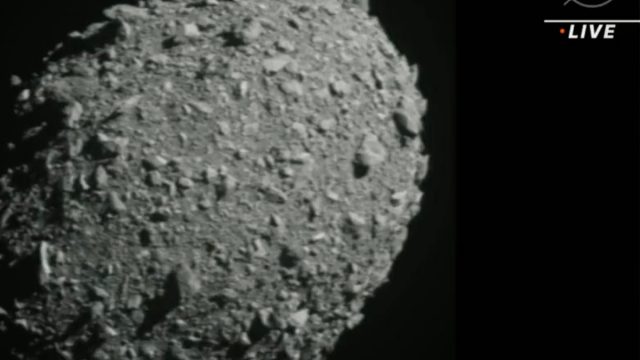
NASA smashed a spacecraft directly into an asteroid this week, and telescopes and cameras captured the exact moment. As the final countdown ticked forward, space experts gasped in awe and exclaimed "Oh, wow." Read on to find out the fairly important reason scientists smashed up a $325 million spaceship, and when we'll know whether the mission was successful.
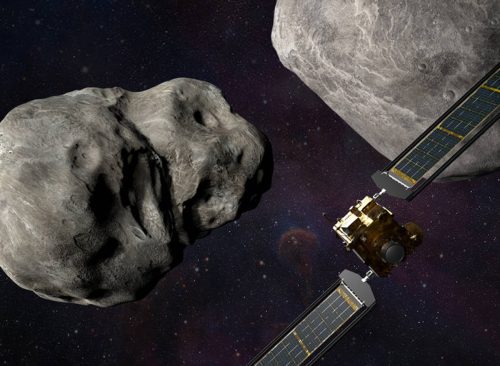
NASA launched the DART—for Double Asteroid Redeflection Test—from California last November. It was aimed at the asteroid Dimorphos, about 6.8 million miles away from Earth. The craft made contact with the massive, 560-foot-wide space rock on Monday night around 7:14 p.m. It slammed into the asteroid at 14,000 miles an hour and was destroyed instantly.
NASA's goal: To see if such a collision could knock the asteroid off its orbit, something that might come in handy some day if an asteroid threatened this planet. Keep reading to learn more and see the video.
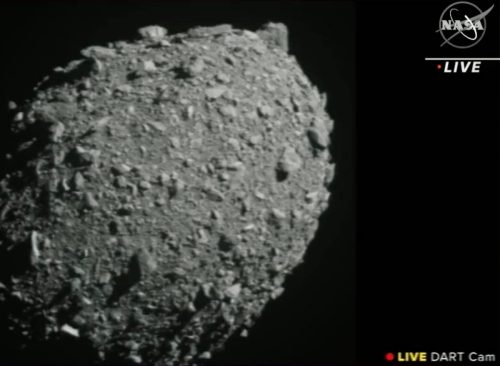
Videos posted on social media showed the unprecedented event from various angles.
NASA's official cam showed a head-on perspective of the impact, as a camera mounted on DART directly approached the rock closer and closer, then went dead. NASA personnel were heard to exclaim "Oh my goodness, look at that" and "Looks to me like we're headed straight in," as the final countdown to impact ticked on. The control room then erupted in applause and cheers.
"We have impact!" a NASA announcer said. "A triumph for humanity in the name of planetary defense."
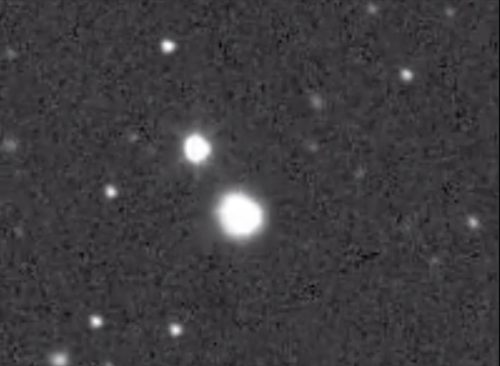
The ATLAS telescope, which is based in Hawaii, showed another view: A sideways track that looked like a primitive video game, as the asteroid was knocked off course in a spray of space debris:
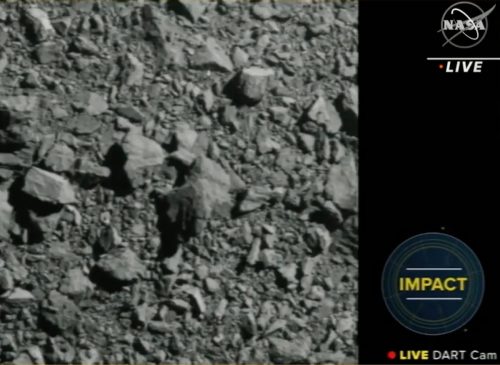
According to NASA, the spacecraft was the size of a vending machine and the asteroid was the size of a football stadium. The space rock was no threat to Earth, and the agency says no asteroid poses an imminent danger to the planet.
But it has happened before, fairly significantly: 66 million years ago, the massive asteroid Chicxulub slammed into the Yucatan Peninsula and wiped out the dinosaurs. A similar strike today could obliterate the human race.
NASA will not know immediately if the mission was successful in knocking the asteroid off course. More than three dozen Earth-based telescopes will be tracking the asteroid's orbit over the next three months to gauge whether its track has changed.
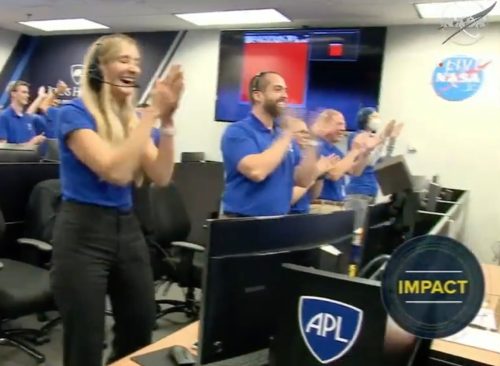
"The dinosaurs didn't have a space program to help them, but we do," said Katherine Calvin, NASA's chief scientist and senior climate advisor, before the collision. "So DART represents important progress in understanding potential hazards in the future and how to protect our planet from potential impacts."
"As far as we can tell, our first planetary defense test was a success," said Elena Adams, DART's mission systems engineer at the Johns Hopkins University Applied Physics Laboratory (JHUAPL), after the impact. "I think Earthlings should sleep better. Definitely, I will."
IMPACT SUCCESS! Watch from #DARTMIssion's DRACO Camera, as the vending machine-sized spacecraft successfully collides with asteroid Dimorphos, which is the size of a football stadium and poses no threat to Earth. pic.twitter.com/7bXipPkjWD
— NASA (@NASA) September 26, 2022














